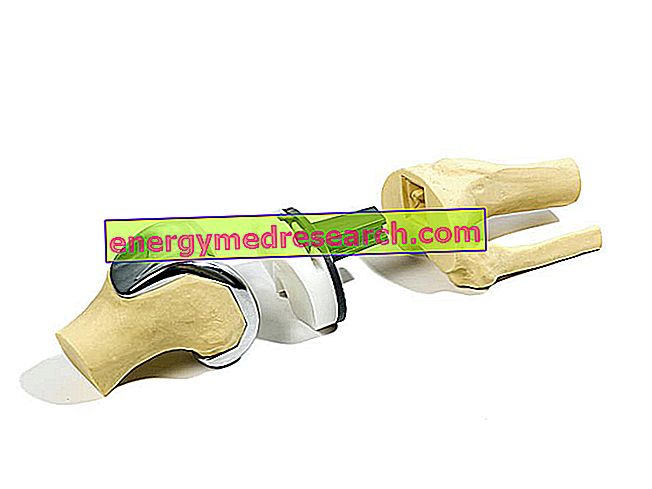
The knee is one of the main joints of the human body .
In fact, situated between the distal portion of the femur (superiorly) and the proximal portion of the tibia (inferiorly), it allows the movement of the legs (together with the hip) and absorbs most of the weight exercised by the trunk.
Like any joint, the knee is also made up of ligaments, tendons and cartilage.
There are four ligaments and, keeping the bony portions involved in the joint together, they provide stability to the joint.
Tendons are structures similar to ligaments, with the only difference that they connect the muscles to the joint bones (for example, the patellar tendon).
Finally, cartilage is the supporting connective tissue that covers and preserves the articular bone ends from damage caused by rubbing. On the upper part of the tibia, it constitutes the meniscuses, fundamental elements for absorbing the stresses of the body on the tibia itself.
When a knee undergoes severe deterioration (for example due to osteoarthritis, rheumatoid arthritis, haemophilia, etc.), implantation of a prosthesis may be necessary.
The implantation of a modern knee prosthesis consists in applying artificial elements between the tibia and the femur, capable of replacing the original joint and alleviating the problems caused by severe damage.
The first and rudimentary knee prostheses were designed and implanted by a German surgeon named Themistocles Glück, between 1890 and 1891 .
In those same years, Glück designed prostheses for all the main human joints, especially hip.
The material used by Glück for his models was ivory.
A few decades later, between 1951 and 1958, a certain Walldius devised the first "hinged" knee prosthesis, made initially of acrylic material and then cobalt and chrome.
Since the "hinged" prostheses did not guarantee the desired results, the design of new models continued and, between the 1960s and the 1970s, the first prostheses were made consisting of a femoral and a tibial component, similar to the current ones .



